This is the second part of a two-part series discussing the Supercharger backlogs and waits that Tesla owners are facing during holiday travel, even at Tesla’s flagship site in Kettleman City, which features 40 charging stalls at a single location.
In the first part of this series, I discussed what design decisions and strategies lead to this point, and in this story, I will discuss some possible solutions that would be quick to implement. I will also analyze some of the considerations and ramifications of those potential strategies.
What Tesla Has Already Tried
This problem with holiday surges is obviously already on Tesla’s radar, so it’s important to look at the solutions that Tesla has already tried. The first thing Tesla tried was increasing charging speeds. This occurred across the board. They have been working to increase the output of their older V2 Superchargers from 120 kW to 150 kW, though that is still shared power (i.e., that max power will be split between two vehicles when both stalls are full. Tesla has also issued software updates to enable various models to charge faster. For instance, the entry level Tesla Model 3 SR and SR+ had been capped at 100 kW charging, but they have recently been updated to have a peak charging rate of 170 kW. Finally, Tesla is deploying their new V3 Superchargers capable of 250 kW charging.
While all of those are admirable efforts that should have been done regardless, they are not likely to have an impact on the backlogs at chargers. In theory, yes, a site can cycle through more vehicles in an hour with faster charging rates and faster chargers; however, Tesla’s peak charging rates only last for a very short time. The result is, while these owners make shorter stops, they also must make more frequent stops, which is simply passing the pressure from one Supercharger site to the next. In my opinion, the best aspect of the 250 kW V3 Supercharger is that it doesn’t share power, so replacing two V2 stalls with two V3 stalls is the equivalent of doubling the number of chargers per site.
And that leads to Tesla’s second strategy, which is increasing the concentration of chargers per site. Not all sites have been expanded, but some (such as the Tejon Supercharger) have seen new banks of charging stalls installed. Again, though, this is likely something that needed to happen anyway, and unfortunately, it hasn’t had a significant impact on this holiday backups. As I mentioned in part one, increasing Supercharger site concentration might be having the opposite of the desired effect because it turns those sites into focal points along routes.
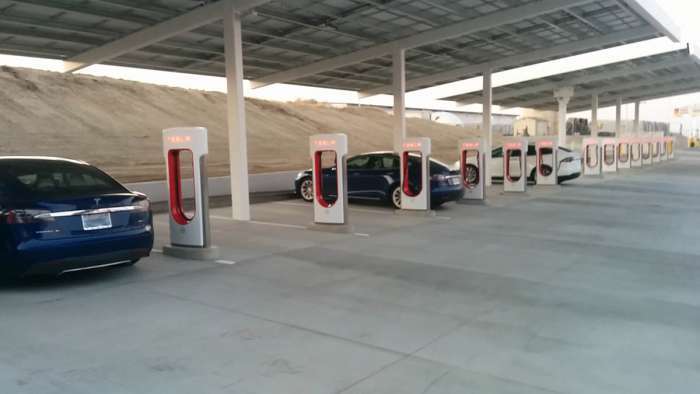
These larger sites mean that, on busy travel days, Tesla owners are going to plan around using those largest Supercharger sites in order to avoid any long waits to access a charger. Ironically, though, if every Tesla owner traveling that weekend thinks the same way, they will all dogpile the largest site, and they are often arriving with such a low battery that they can’t make it to the next Supercharger. So a vast majority of Tesla drivers heading south on I-5 are going to choose the 40-stall Kettleman City site over the 18-stall Harris Ranch site, and a vast majority of Tesla drivers heading north are going to favor Kettleman City over the 10-stall Buttonwillow site. This disparity in perceived site quality makes Kettleman City act as a focal point on the route.
Consider what would happen if the Kettleman City site was outfitted with 40 of Tesla’s V3 Superchargers. At best, it could cycle through about 160 vehicles an hour, which could fall well short of what could be thousands of cars during a relatively short travel window.
Even expanding the sites have additional stalls might not be that effective. Tesla has also deployed temporary chargers at areas with peak demand; however, that strategy is yet to prove effective. It could, in fact, simply result in slightly different focal points.
In the following sections, I’ll discuss three strategies that Tesla could employ to completely offset these holiday backlogs, though they aren’t without consequence (which is possibly why Tesla hasn’t attempted them). These are focusing on site distribution over concentration, partnering with public charging providers, and making a quality DC fast charging adapter.
Tesla Needs to Improve Site Distribution
The first strategy Tesla needs to pursue is to focus less on individual site expansions and focus more on improving their overall site distribution. The single biggest issue with Tesla’s site distribution at this point is that if a Tesla owner arrives with anything less than 20% battery, they are stuck waiting for that site. This is in stark contrast to the public charging infrastructure, where many charging sites are within reach of other charging sites, even when the car is down to 5% to 10% battery.
Even though Tesla electric vehicles represent a majority of the all-electric vehicles used for traveling long distances at this point, there are as many public charging sites along I-5 between Santa Nella and Tejon as Tesla has Supercharger sites, and several more public charging sites are still under construction. What is more, the public charging network is nearly as well supported on Highway 101 and even better supported on Highway 99, which gives electric vehicle owners who are relying on the public charging infrastructure more than one north-south route to choose from.
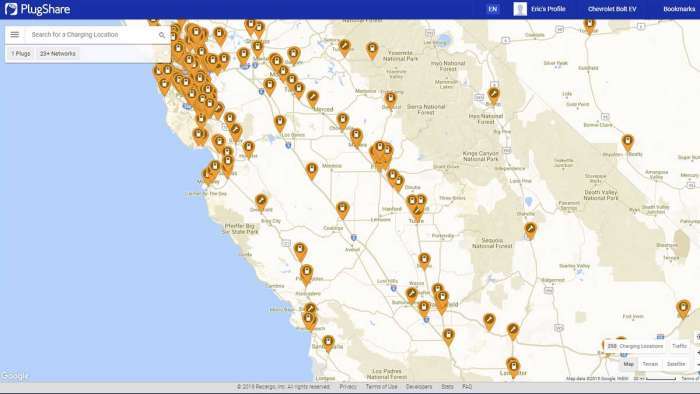
In part one I mentioned that Tesla’s Fresno Supercharger is the only site bridging a 250-mile gap on Highway 99 between Manteca and Tejon. However, as a non-Tesla electric vehicle owner, Highway 99 is my preferred route during peak travel times because of the number and distribution of charging sites. Compared to Tesla's single site in Fresno, there are nearly 30 public charging sites on Highway 99 between Manteca and Tejon, with even more currently under construction.
While these public charging sites are smaller than Tesla's Supercharger sites, their distribution and diversity actually creates an additional level of protection against backlogs and queues. In addition, their relative similarity discourages a majority of electric vehicle drivers from targeting any one site along the route (i.e., what happens with the Kettleman City Supercharger).
The obvious drawback to this is, of course, that building a distributed network requires both time and money, and it’s not clear that Tesla will be able to fund enough chargers for their high-volume, low margin vehicles. When Tesla was primarily selling the more expensive Model S and Model X vehicles, it was easy to install a new charging stall for every few vehicles they sold. However, even after bringing down production costs and increasing margins, Tesla will be lucky to fund one new charger for every 20 or 30 sub $40,000 vehicles they sell.
What’s less obvious is that Tesla also might start losing access to choice charging sites. Currently, business owners still aren't completely knowledgeable about electric vehicle charging. Many people I speak with outside of electric vehicle circles aren't even aware that different charging standards are available or that Tesla actively prevents non-Tesla electric vehicles from using their chargers. However, with time, businesses will start to realize that only Tesla owners can access the charging sites that they granted easements and leases to.
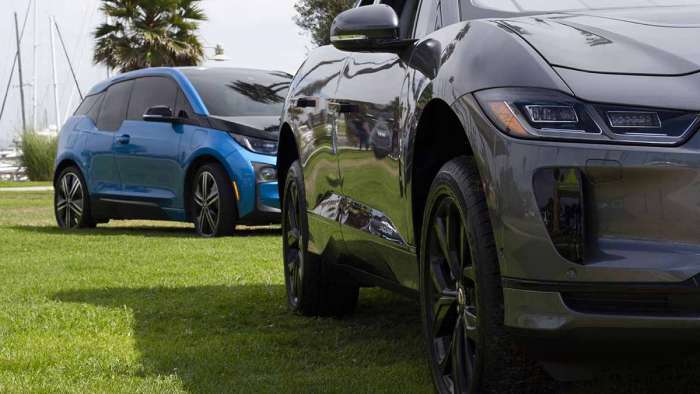
When Audi, Cadillac, Jaguar, and Porsche owners start complaining about not being able to use Tesla's proprietary chargers hosted at the facility, or when these businesses realize that they have been missing out on 30, 40, or 50 potential BMW i3, Chevy Bolt EV, Hyundai Kona Electric, or Nissan LEAF customers each week just because the chargers they are hosting are exclusive, Tesla may see their access to these sites dry up. In terms of easements and leases, savvy business owners will give priority to charging providers who are offering universal access to charging services. Their parking spaces are a resource, and no business wants to lose out on potential customers.
Essentially, if Tesla wants to continue expanding their Supercharger Network, it cannot remain closed. That means they have two options: Open up their Superchargers to non-Tesla electric vehicles or partner with a public charging provider to collaborate on new sites.
Partner with Public Charging Provider
As of the writing of this article, Tesla has 738 open Supercharger sites in the United States, making them the second largest U.S. charging provider by DC fast charging site (EVgo has well over 750 sites). However, even with 100 or so new Supercharger sites in various levels of permitting and construction, Tesla still has a long way to go to achieve the distribution they would need to alleviate these gluts of cars attempting to charge.
Partnering with one or more public charging providers would enable Tesla to nearly double their Supercharger Network distribution quickly while saving a considerable amount of money. One of the reasons Tesla initially focused on larger Supercharger sites was that it helped them reduce costs because planning, permitting, and constructing the site is largely the same regardless of site size. Because of that, the cost of each additional charger added to a site reduces the overall cost per charger.
However, partnering with a public charging provider could reduce costs even further because Tesla and the other provider would now be able to split permitting fees, so Tesla could potentially build two Supercharger sites for a similar cost to what they are currently paying to build one site.
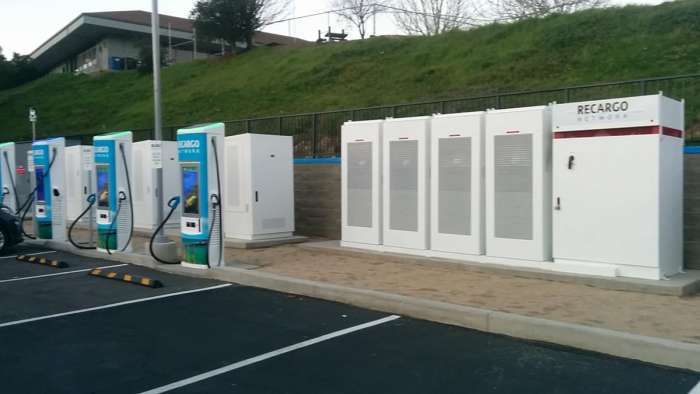
Several public charging providers have already mentioned that they would be more than happy to partner with Tesla on future charging sites, and several, such as Electrify America and Recargo have been using Tesla Power Packs to offset demand fees from the grid. The City of Pasadena also recently commissioned Tesla to build what will be one of the largest charging sites in the country; however, they required Tesla to design and engineer the site to include a number of public charging stalls.
This coordinated effort also provides a more compelling argument to potential site hosts who want to know that they are not excluding any potential customers, so this should prevent Tesla from running into access issues in the future as more non-Tesla electric vehicles come to market.
And speaking of marketing, this coordinated effort offers some interesting marketing opportunities and risks. On one hand, as long as Tesla can maintain ease of use, reliability, and charging speed, they could see potential sales from non-Tesla electric vehicle owners who are won over by Tesla’s vehicles and chargers. On the other hand, if Tesla owners see other, compelling electric vehicles keeping pace with them on long trips, Tesla could risk losing sales to those automakers.
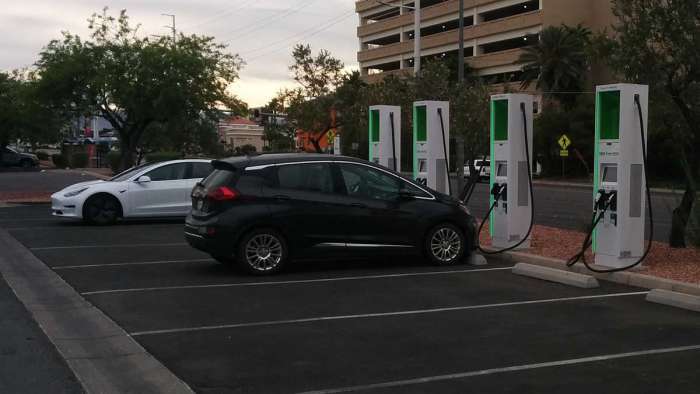
Regardless, though, from my perspective as an electric vehicle advocate, I see only good coming from this. If I had to name my biggest criticism of the Tesla community at this point, it would the relative ignorance about the public charging infrastructure, and I blame lack of exposure. It’s now a regular occurrence to see posts from Tesla owners who don’t know how many public charging sites are available, the range of public charging speeds, how much it costs to charge on various public networks, or even which plug standards are compatible with which vehicles. And for what I consider to be Tesla’s most effective strategy for combating holiday backlogs, Tesla owners are going to need to understand the public charging infrastructure.
Tesla Needs a CCS Adapter for North America
Tesla currently offers a CHAdeMO-to-Tesla adapter that customers can currently buy for $450. This is a big, unwieldy adapter that enables Tesla owners to plug in and charge at most public DC fast charging sites; however, this adapter has a number of issues outside of its price and size.
First, most public charging networks have their own accounts, and Tesla isn’t offering a bridging service for their customers like Mercedes is doing and Ford intends to do. Essentially, before a Tesla owner can even use that charger with an adapter, they first either need to set up an account with that public charging service or pay by credit card (which is typically more expensive, adds an additional failure point, and still isn’t available on all public chargers).
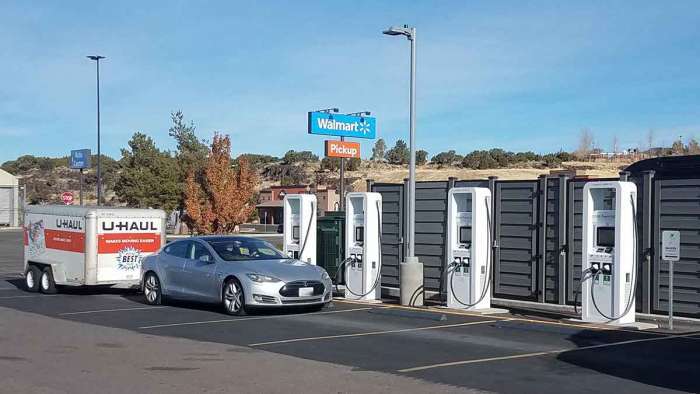
To make matters worse, Tesla’s CHAdeMO adapter and most CHAdeMO plugs at this point are restricted to 50 kW. For Tesla’s bigger battery, less efficient vehicles, charging at 50 kW or less would be considered extremely slow (using Tesla’s charging language: 100 to 150 miles per hour for the Model S or Model X). So this adapter is fine for a dinner stop, but it’s hardly compelling for a Tesla owner who wants to take a short bathroom or coffee break. What’s more is that CHAdeMO isn’t being fully supported by all networks anymore. In particular, Electrify America is only including one CHAdeMO charger per site, and their sites range from three to ten chargers each. So a Tesla owner with a CHAdeMO adapter can only access one plug per site.
In Europe, on the other hand, where the public charging infrastructure was considerably ahead of the Supercharger Network and CCS is the established public charging standard, Tesla actually released their Model 3 with a CCS rather than Tesla plug. In addition to retrofitting their Supercharger sites with CCS plug heads, they also offered Model S and Model X Tesla owners the option of buying a CCS-to-Tesla adapter. Now, before North American Tesla owners get excited, the CCS standard in Europe is slightly different than the CCS standard in North America; however, that adapter does prove that Tesla is capable of making a high-power CCS-to-Tesla adapter.
Tesla might have their reasons for not offering a CCS adapter in North America (I’ll discuss this more below), but I think it would actually be the fastest, most-effective way for Tesla to combat their holiday Supercharger backlogs. Just along I-5 between Santa Nella and Tejon (where Tesla’s longest charging delays occur), Tesla owners with an adapter would see their site count double. Not only that, two of those sites currently offer Tesla owners faster charging than they could get on the 150 kW V2 Superchargers.
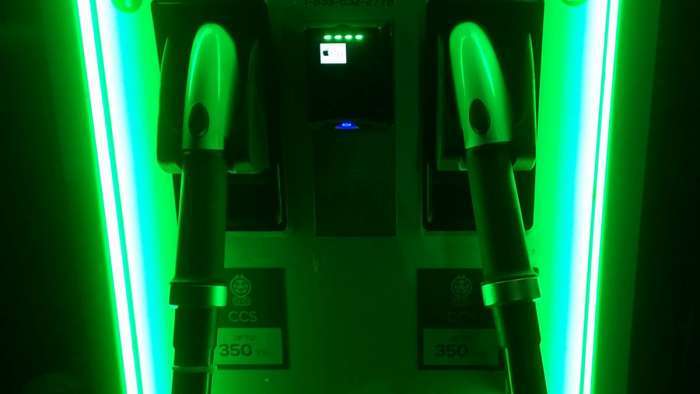
Of course, this would also open up multiple other routes that would pull pressure off of the primary, I-5 corridor. My friend who was delayed more than 30 minutes at the Fresno Supercharger along Highway 99 could have plugged in and charged at faster speeds than the Supercharger using one of two nearby Electrify America sites (one less than 30 miles to the south and one less than 20 miles to the north).
Outside of an improved customer experience, the best aspect of these adapters for Tesla is that they are an instant revenue generator. A CCS to Tesla adapter could be built for just a few dollars in parts and manufacturing, and Tesla owners would easily spend $200 or more to keep one in their frunk, trunk, or ditty bag.
If Tesla truly wanted to support these adapters, though, they would also want to program their navigation and trip planning software to now account for public charging sites along the route. It could be as simple as toggling between which networks you would want to use in addition to or instead of the Supercharger Network.
And I believe that these adapters will help the public charging networks. Electrify America has hundreds of charging sites in remote areas where they will be used almost exclusively by long-distance electric vehicles that are traveling through the region. There simply aren’t enough non-Tesla electric vehicles to keep those sites busy at this point, meaning they are more likely to fall into disrepair (making them less reliable than an actively used site), be vandalized, or be seen a simply another parking space by locals who rarely if ever see them in use. The increased traffic from Tesla owners would not only generate income for those network providers, but it would also ensure that the sites are more reliable through regular use and upkeep.
Also, several public charging sites are regularly “Iced” by Tesla owners who cannot plug in or use the charger because there is no compatible adapter. With a ready adapter, Tesla owners would have no excuse for taking up a charging space while not using the charger. Those owners can either be plugged in and actively charging or be ticketed and towed. This will make parking enforcement’s job far easier, and it will discourage electric vehicle owners from blocking a charger that they don’t actually intend to use. In the worst case, perhaps they don’t need to use the charger, but at least they are paying the charging provider while blocking the space.
The risk to Tesla for these adapters, however, is actually very high. While Tesla doesn’t have a traditional marketing division like other automakers, their Supercharger Network’s cost center should really fall under marketing. It is, simply put, an ownership perk and incentive program for Tesla owners. This is why Tesla’s programs for free or discounted access to the Superchargers are often tied to their highest margin vehicles or referral program.
If Tesla owners start regularly using public chargers that are better dispersed, conveniently located, and faster charging than Tesla’s 150 kW V2 Superchargers, it erodes away at Tesla’s marketing and sales. As ridiculous as it is to say in 2019, one of the number one statements made to dissuade people from buying a non-Tesla electric vehicle is, “But you can’t charge it away from home!” While that statement is now patently false, there are few Tesla owners with either the courage or the knowledge to stand up for the public charging infrastructure, and Tesla sales directly benefit from that echo chamber.
When thousands of Tesla owners find that traveling during the holidays is convenient and relaxing again when using the public charging infrastructure, they not only risk undermining that oh so valuable groupthink, but they might also start losing market share to other automakers who are offering compelling electric vehicles of their own. When Tesla owners start correcting other Tesla owners who proclaim “Where are you going to charge it!?!”, prospective electric vehicle buyers will start to buy the EV that best fits their needs and lifestyle. And that’s a danger to Tesla’s bottom line.
Conclusion
While these holiday Supercharger backlogs occur only occasionally during the holidays, they are going to become more prevalent as Tesla sells vehicles faster than they install new charging sites. Their current strategy of building large sites that act as focal points along routes might not be effective, and could in fact be part of the actual problem.
There’s no question that Tesla needs to continue diversifying and expanding their Supercharger network, though it will be costly and time consuming for them to do on their own. Partnering with public charging providers to both enhance current sites and build new public charging sites would be a more cost-effective approach.
Tesla also needs to offer a North American CCS adapter that they also support through their navigation and route planning software. Even if it means losing some sales to competing electric vehicle automakers over time, the net benefit to their customers is too much to ignore.
About The Author
Eric Way focuses on reporting expert opinion on GM brand electric vehicles at Torque News. Eric is also an instructional designer and technical writer with more than 15 years of writing experience. He also hosts the News Coulomb video blog, which focuses on electric vehicles, charging infrastructure, and renewable energy. Eric is an active member of the EV Advocates of Ventura County, a volunteer organization focused on increasing the widespread adoption of electric vehicles. You can follow Eric on News Coulomb Youtube, on Facebook at @NewsCoulomb as well as on Twitter at @eway1978.

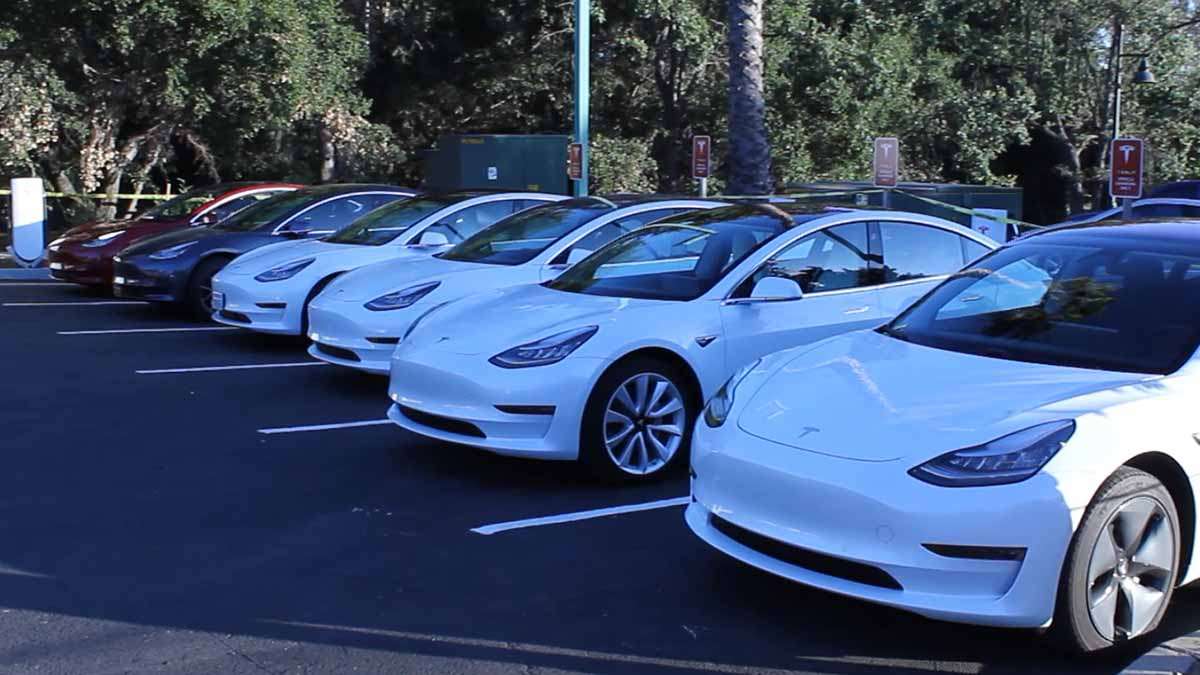




Comments
Brilliant Eric. Really makes
Permalink
Brilliant Eric. Really makes one stop and think about both charging networks. The public charging network is still not complete even here in California. We still can't go east from Bakersfield. And today the Denny's in Tehachapi, a site for ChargePoint that's under development, was closed by the Health Dept. I don't know what that does to CP's plans but it can't help.
Paul